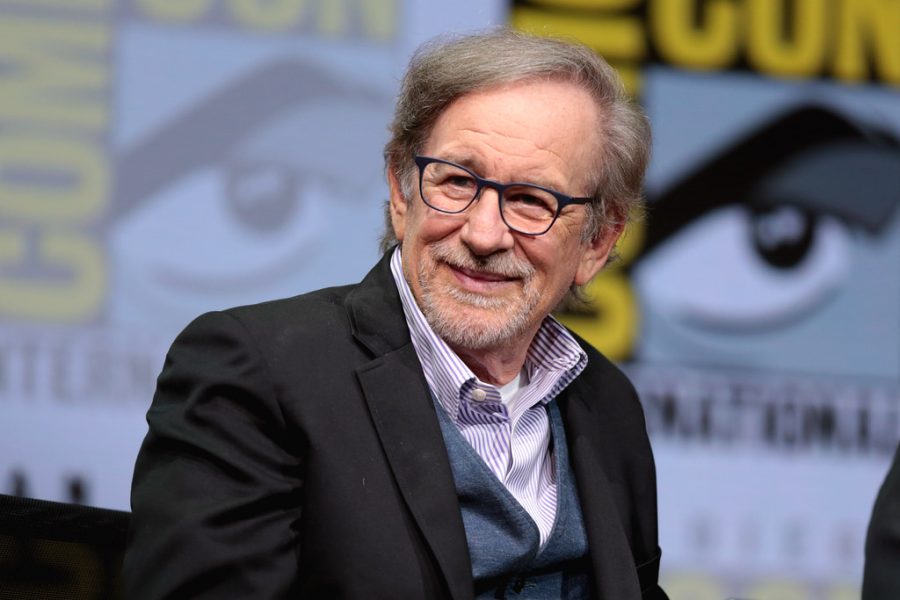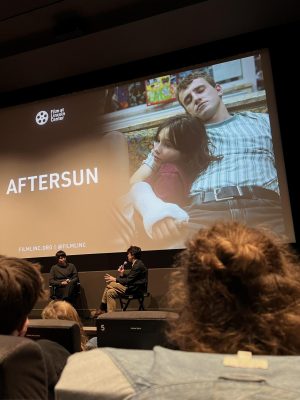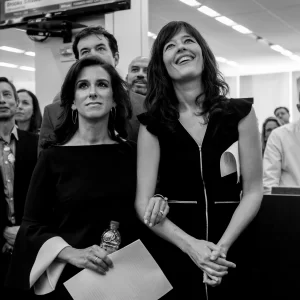The Cinematic Self-Reflection of ‘The Fabelmans’
The famed director’s latest work finds him at his most personal and introspective
GAGE SKIDMORE VIA FLICKR
Steven Speilberg finally his own pathos in “The Fabelmans,” a film loosely based on his own childhood.
December 11, 2022
Steven Spielberg is a director who is synonymous with spectacle, best known for originating the modern blockbuster with 1975’s “Jaws,” and delivering a steady stream of commercial films throughout the decades. Spielberg’s filmography has been described as many things — exciting, inspiring, emotional — but it could rarely be categorized as self-reflective until now.
With “The Fabelmans,” Spielberg finally turns the camera on himself and examines the pathos behind his well-known artistry in what may be one of his best films yet.
Loosely based on Spielberg’s own childhood, “The Fabelmans” centers around Sammy Fabelman (Gabriel LaBelle), an aspiring young filmmaker growing up in a household split between science and art.
Sammy’s father, Burt (Paul Dano), is a brilliant but neurotic computer engineer who is unsure about his son’s direction in life and hopes his directing stint remains a hobby. On the other hand, his mother, Mitzi (Michelle Williams), is a spacey, fun-loving woman who encourages her son’s artistic dreams, having at one point pursued the piano herself.
Editor Michael Kahn chooses to cut between shots of Sammy scrolling through this footage and shots of his father in the next room listening to Mitzi play the piano as if nothing is wrong, adding to the heartbreak of the moment.
For some, this may seem like a cliched setup to yet another movie about movies. However, “The Fabelmans” is much deeper than that, critically examining the way in which filmmaking affected young Spielberg’s life and helped him cope with the world around him.
The film was written not only as a love letter to the movies but as a tribute to Spielberg’s parents, both of whom have passed away in recent years.
Playing the parents of one of the most legendary figures in Hollywood must have been no easy task, but Dano and Williams are more than up for the challenge, adding a necessary dimension to the people who originated Spielberg’s love of filmmaking.
The opening scene in the film, in which a timid 7-year-old Sammy is taken by his parents to see his very first movie, “The Greatest Show on Earth,” demonstrates the different outlooks of his parents perfectly. While Burt tries to illustrate the mechanics of the movie camera and the illusion of motion it creates, Mitzi says with stars in her eyes, “Movies are dreams that you never forget,” not attempting to explain the magic but instead letting him experience it for himself. Dano’s calm, rational demeanor in this scene contrasts nicely with Williams’ more theatrical performance.
As Sammy sits down in the theater to watch the movie’s climactic train collision scene, his face is filled with astonishment and fear — the illusion is all too real for him. This fear becomes an obsession as he tries to recreate the moment with a model train set at home.
While Burt doesn’t understand his son’s obsession with seeing the trains crash, Mitzi empathizes with Sammy and his need to create art to confront his fear. She suggests that he film the crash once and watch it over and over until it no longer scares him without ever breaking his real train. We feel the same wonder and amazement Sammy does when capturing the event. The sequence speaks to film’s ability to preserve memories and make even the smallest moments feel large on screen. Sammy is able to wield the power of filmmaking to assert control over the strange and chaotic.
For Sammy, filmmaking becomes not just an escape from reality but also a way to cope with it. A major turning point in the film comes when Sammy is editing together a home video of a camping trip and discovers a shocking family secret. Editor Michael Kahn chooses to cut between shots of Sammy scrolling through this footage and shots of his father in the next room listening to Mitzi play the piano as if nothing is wrong, adding to the heartbreak of the moment. The quiet devastation in LaBelle’s performance as reaches his trembling hand into a drawer to pull out a reel to screen for his mother is powerful. The whole sequence is a great example of “show, don’t tell.”
By reliving his own childhood, Spielberg is able to get to the heart of why he got into movies in the first place: to have an outlet to express himself.
During a heartbreaking family argument about said secret, Spielberg makes yet another creative visual choice, cutting to a shot of Sammy looking at himself in a mirror and imagining how he would film this scene from his life. The brief image carries a lot of weight, interrogating the ethics of Spielberg’s job through the eyes of his self-insert character. Instead of reckoning with the traumatic, earth-shattering moment unfolding in front of him, Sammy would rather distance himself from reality and filter all his emotions through a cinematic lens. The moment is one of self-confession for Spielberg where he admits that there is something inherently exploitative about filmmaking, about spinning the pain of your past into a piece of art, but that it is no less therapeutic.
Sammy’s art also intersects with his social life at school in interesting ways. After screening a senior skip day video for his class, one of his bullies, Chad, confronts him about it, asking why he was made out to be athletic and powerful in the film when he had been so cruel in reality. Sammy tries to shrug it off by saying he just points the camera and the films make themselves, but the audience is able to call his bluff.
Cinema has a uniquely transformative quality, and through editing and cinematography, a director can reframe reality. In this case, Sammy turned the worst person he knew into a God-like figure, creating an image that is impossible to live up to. Chad’s recognition of this not only makes him one of the more psychologically complex onscreen bullies but also presents a direct challenge to Sammy’s naive worldview that his art has no real impact on others. Sammy learns through this tense interaction that art has the power to redeem as well as destroy and that he must wield that power more responsibly.
By reliving his own childhood, Spielberg is able to get to the heart of why he got into movies in the first place: to have an outlet to express himself. In a way, he affirms both of his parents’ perspectives: Movies are precisely engineered magical illusions. Through filmmaking, young Spielberg, just like Sammy, was able to fabricate his own little version of reality, creating art that imitates life in all its ugly confusion.
This quality makes “The Fabelmans” not just a captivating story on its own but a wonderful late-career work of Spielberg’s that puts his other movies into a deeper, richer context. The film will certainly be remembered as one of Spielberg’s best and further solidifies him as one of the greatest living filmmakers.















